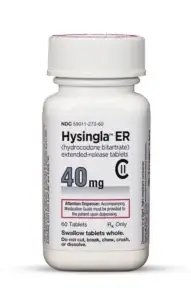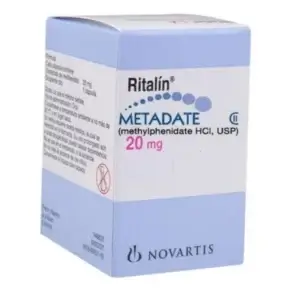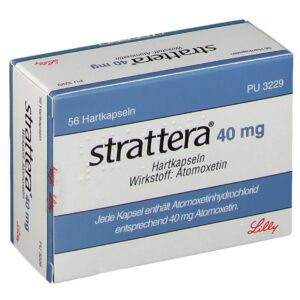Uncategorized
Understanding Opioid Addiction: Causes, Symptoms, and Treatment Options
What Is Opioid Addiction?
Opioid addiction is a chronic medicationical condition characterized by a person’s compulsive use of opioid drugs, even when they know it’s causing harm to their health, relationships, and daily life. Opioids are a class of drugs that include both prescription painkillers like oxycodone, hydrocodone, and fentanyl, as well as illegal drugs like heroin.
Opioids are highly addictive because they interact with the brain’s reward system, causing a surge of dopamine that produces intense feelings of pleasure and euphoria. Over time, the brain becomes accustomedication to the presence of opioids, and the person needs higher and higher doses to achieve the same effect.
Opioid addiction can cause a range of physical and psychological symptoms, including cravings, withdrawal symptoms when not using, impaired judgment and decision-making, depression, and anxiety. If left untreated, opioid addiction can lead to serious health problems, including overdose and death.
Treatment for opioid addiction typically involves a combination of medicationication-assisted treatment (MAT), counseling, and behavioral therapy. MAT involves the use of medicationications like methadone, buprenorphine, and naltrexone to help reduce cravings and prevent relapse. Counseling and behavioral therapy can help individuals develop coping skills, address underlying emotional issues, and learn how to manage triggers that can lead to drug use.
Opioid addiction is a growing problem worldwide, affecting millions of people. Opioids are a class of drugs that are commonly used to treat pain, but they can also be highly addictive. In this blog post, we will discuss the causes, symptoms, and treatment options for opioid addiction.
Causes of Opioid Addiction

The primary cause of opioid addiction is the prolonged use of opioids, which can lead to physical dependence. Opioids are highly effective pain relievers that work by binding to specific receptors in the brain and spinal cord. These receptors are responsible for the sensation of pain, but they can also cause feelings of pleasure and euphoria.
When opioids are used for a prolonged period, the body becomes tolerant to the medicationication, requiring higher doses to achieve the same effects. This can result in addiction when individuals continue to take the medicationication despite negative consequences.
Another cause of opioid addiction is the illicit use of opioids, such as heroin or fentanyl. These drugs are highly addictive and can lead to physical and psychological dependence after only a few uses.
In addition to prolonged use and illicit use, genetic and environmental factors can also contribute to opioid addiction. Studies have shown that individuals with a family history of addiction may be more susceptible to opioid addiction. Environmental factors, such as trauma, stress, and social isolation, can also increase the risk of opioid addiction.
Symptoms of Opioid Addiction

The symptoms of opioid addiction can vary depending on the severity of the addiction. Common symptoms may include:
- Increased tolerance to the medicationication
- Using the medicationication more frequently or in larger doses than prescribed
- Withdrawal symptoms, such as nausea, sweating, and anxiety when not using opioids
- Using opioids despite negative consequences, such as legal or financial problems, relationship issues, or health concerns
- Loss of interest in activities that were once enjoyable
- Social withdrawal and isolation
In addition to these symptoms, individuals with opioid addiction may also experience physical symptoms, such as constipation, nausea, and respiratory depression. They may also experience cognitive impairments, such as memory loss, poor judgment, and difficulty concentrating.
Treatment Options for Opioid Addiction

There are several treatment options available for opioid addiction, including medicationication-assisted treatment (MAT) and behavioral therapy. MAT involves the use of medicationications such as methadone, buprenorphine, or naltrexone to manage withdrawal symptoms and reduce cravings.
Methadone is a long-acting opioid that can be used to manage withdrawal symptoms and reduce cravings. It is available only through specialized treatment programs.
Buprenorphine is a partial opioid agonist that can be used to manage withdrawal symptoms and reduce cravings. It is available through doctors who have received special training to prescribe it.
Naltrexone is an opioid antagonist that can block the effects of opioids. It can be used to prevent relapse after detoxification.
Behavioral therapy can help individuals address the underlying psychological factors that contribute to addiction and develop coping skills to prevent relapse. Several types of behavioral therapy may be used, including:
- Cognitive-behavioral therapy (CBT): A type of therapy that focuses on changing negative thoughts and behaviors related to opioid addiction.
- Motivational interviewing: A type of therapy that focuses on building motivation and commitment to change.
- Contingency management: A type of therapy that uses rewards to reinforce positive behaviors and discourage negative behaviors.
Other treatment options may include support groups, such as Narcotics Anonymous, and holistic therapies such as acupuncture, medicationitation, and yoga.
Conclusion

Opioid addiction is a serious problem that requires prompt treatment. With the right support and treatment, individuals can achieve long-term recovery from opioid addiction. Seeking professional help is essential for those struggling with opioid addiction, as addiction





